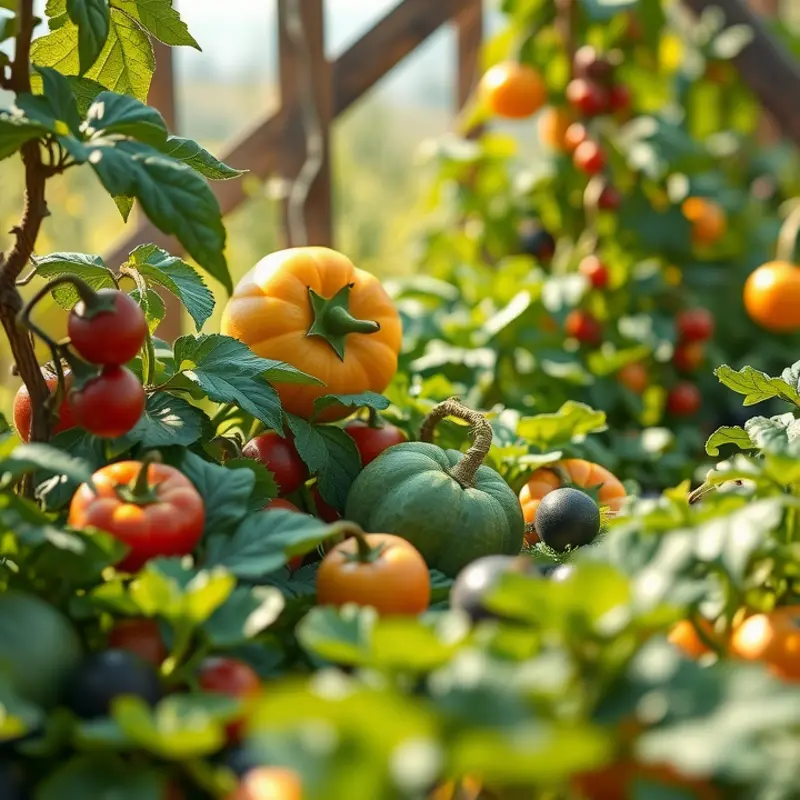Low-histamine diets are emerging as a dietary trend, capturing the interest of those seeking relief from various symptoms related to food sensitivities. Histamines, naturally occurring compounds in the body and certain foods, can trigger a range of allergic-like reactions. By understanding the principles and foods involved in a low-histamine diet, individuals can take informed steps toward optimizing their health. This guide offers insights into what foods to embrace, which to avoid, and practical tips for daily meal planning.
Understanding Histamines and Their Impact

Histamines are naturally occurring compounds in the body, playing a crucial role in the immune system. They act as signaling molecules, helping the body respond to foreign invaders such as allergens. When an allergen is detected, histamines are released from immune cells, triggering a response to combat potential threats. This response includes expanding blood vessels, allowing other immune cells to act more effectively against intruders.
While essential for immune responses, histamines can also pose challenges, especially in individuals with heightened sensitivities. In such cases, the body may release excessive histamines or unable to break them down effectively. This situation can lead to symptoms ranging from headaches and rashes to digestive issues and respiratory problems.
Histamines are not only produced by the body but are also present in various foods. Some foods contain naturally high levels of histamine, such as aged cheeses, fermented products, alcohol, and processed meats. These items can trigger symptoms in sensitive individuals, exacerbating issues like those mentioned before.
Conversely, some foods remain low in histamines, often proving safer for those requiring dietary adjustments. Fresh fruits and vegetables, with some exceptions like tomatoes and spinach, generally have lower histamine levels. Fresh meats and fish also tend to be low in histamines, providing protein options without exacerbating symptoms.
Understanding these distinctions is vital for someone managing histamine sensitivity or histamine intolerance. Recognizing foods that consistently cause symptoms can empower individuals to make informed dietary choices. These choices can significantly impact daily wellness and long-term health.
To aid in managing a low-histamine diet, consider practical tips like keeping a food diary to track symptoms and identify triggers. Additionally, integrating fresh food preparation techniques can help maintain low histamine levels, as prolonged storage and aging of foods tend to increase histamine content. For tips on safer storage practices, consider reading resources that focus on minimizing waste and maintaining food quality.
Symptoms of histamine intolerance can vary widely but often include headaches, skin irritation, and gastrointestinal discomfort. Recognizing these signs is the first step in addressing potential histamine-related issues. By aligning dietary practices with an awareness of histamine content, individuals can often find relief from persistent, uncomfortable symptoms, ultimately promoting a more balanced life.
Crafting Your Low-Histamine Meal Plan

Embarking on a low-histamine diet entails a thoughtful selection of meals that are both flavorful and carefully curated to minimize discomfort. To achieve this, planning plays an essential role. A well-constructed meal plan ensures that you consume a balanced diet while avoiding high-histamine triggers. Here’s how you can craft such a meal plan, complete with ingredient ideas, substitutions, and cooking tips.
Start with a base of fresh ingredients. Fresh meat, poultry, and fish are excellent choices, as they are less likely to have accumulated histamine compared to processed or aged products. For instance, opt for freshly caught white fish or skinless chicken breasts over smoked or cured varieties. To add more variety to your diet, consider incorporating eggs, which are low in histamines, as they can be versatile meal staples.
In terms of grains, rice and quinoa are great low-histamine options. They provide essential carbohydrates and can complement any meal. When selecting fruits and vegetables, focus on those with low histamine levels, such as apples, pears, carrots, and zucchini. Berries like blueberries can also be a delightful addition to your plate, provided they are fresh and consumed promptly.
One way to keep meals exciting is to explore ingredient swaps that maintain flavor without increasing histamine levels. Instead of high-histamine cheese or soy sauce, use a nutritional yeast or coconut aminos for a deeply satisfying taste profile. These alternatives maintain rich flavors without compromising your dietary needs. For those who love spice, herbs like thyme, basil, and oregano can add depth to any dish without the need for pepper or chili flakes.
Cooking techniques can also help manage histamine levels in meals. Gentle cooking methods, such as steaming and poaching, preserve the integrity of ingredients while minimizing histamine formation. Consider sautéing meats quickly in olive oil with fresh herbs for a quick, low-histamine meal.
Additionally, the use of a food diary can greatly assist in navigating your journey with low-histamine diets. Keep detailed notes on what you eat and your subsequent reactions. This practice not only identifies triggers but also highlights patterns that can refine your meal plans over time.
To kickstart your culinary exploration, consider a simple recipe that combines these elements: Try a fresh white fish filet, lightly seasoned and steamed with zucchini slices and a serving of quinoa on the side. Finish with a squeeze of lemon juice for an extra kick of freshness.
For more ideas on minimal preparation and flavorful concoctions, visit this informative guide on easy meal prep ideas. It offers practical insights into creating nutrient-rich meals with minimal fuss.
Incorporating these practical steps can turn your low-histamine meal plan into a delicious regimen rather than a restrictive diet. With creativity and the right resources, it’s possible to enjoy flavorful dishes that align with your health needs.
Final words
Adopting a low-histamine diet can provide relief for individuals sensitive to histamines, offering a pathway to improved comfort and wellness. By understanding the foods that contribute to histamine accumulation and incorporating a variety of safe ingredients into daily meals, individuals can tailor their diets to better suit their health needs. As with any dietary change, it’s beneficial to consult with a healthcare provider or nutritionist to navigate personal sensitivities effectively. Transitioning to a low-histamine lifestyle is not just about restrictions; it’s about discovering new flavors, ingredients, and the capacity for better health and enjoyment of food.








